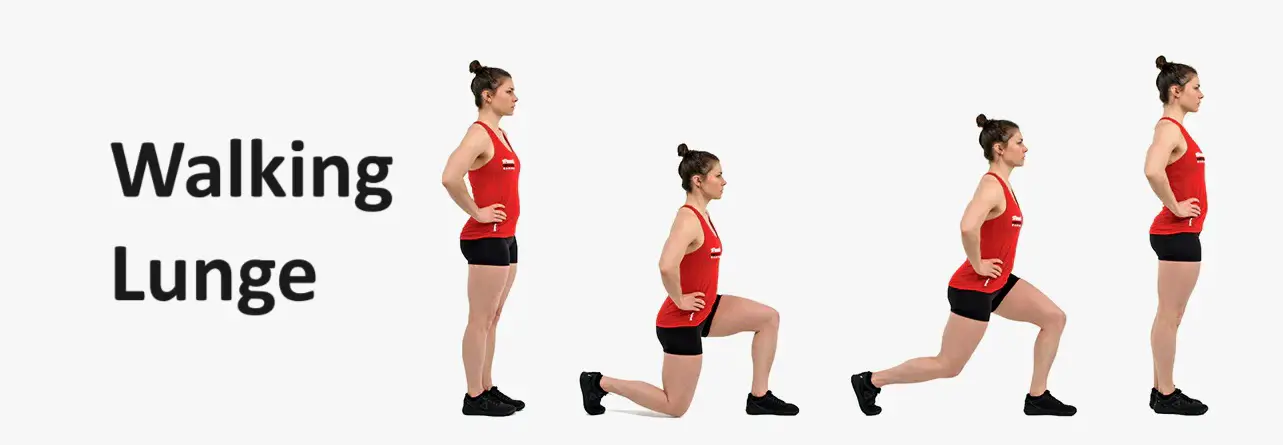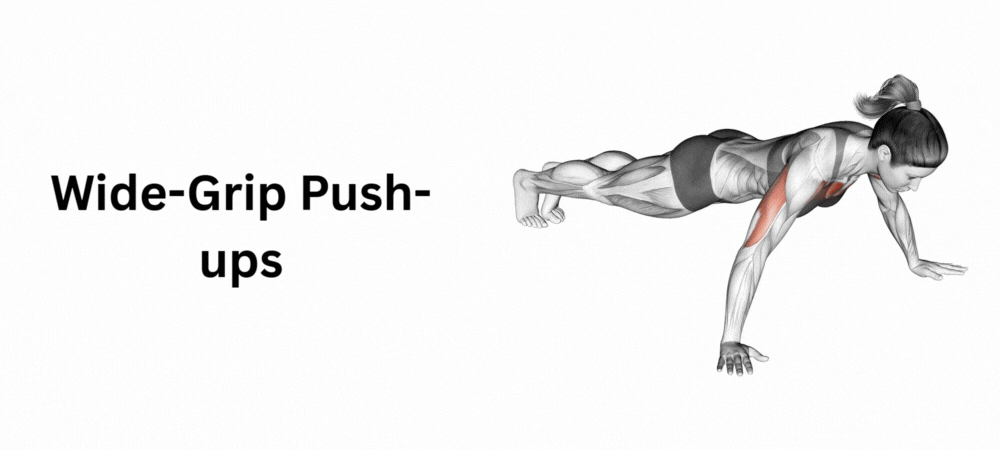The walking lunge is a dynamic lower-body exercise known for its effectiveness in targeting the quadriceps, hamstrings, and glutes. This compound movement not only enhances lower body strength but also challenges balance and stability. It involves performing lunges in a walking motion, making it an excellent addition to strength training and functional fitness routines. In this comprehensive guide, explore the technique, benefits, and alternative exercises related to the walking lunge.
Instructions
Setup:
- Starting Position: Stand tall with your feet together and your hands on your hips or down by your sides.
Execution:
- Step Forward: Take a large step forward with one leg, lowering your hips and bending both knees to form 90-degree angles.
- Alignment: Ensure that your front knee is directly above your ankle and doesn’t extend beyond your toes.
- Back Knee: Gently lower the back knee toward the ground without touching it.
- Push Off: Push off the front foot to bring the back foot forward, stepping into the next lunge.
- Repeat: Continue alternating legs and perform the desired number of walking lunges.
Tips:
- Keep an upright posture throughout the movement.
- Engage your core muscles for stability.
- Perform the movement in a controlled manner to maximize muscle engagement.
- Ensure proper knee alignment to avoid excessive stress on the joints.
Benefits of Walking Lunge
- Lower Body Strength: Walking lunges effectively target major lower body muscles, including the quadriceps, hamstrings, and glutes, leading to increased leg strength.
- Balance and Stability: This exercise challenges balance and stability, improving coordination and control while moving.
- Functional Movement: Mimicking everyday activities, and walking lunges enhance overall functional fitness and movement efficiency.
- Flexibility: Performing walking lunges can contribute to increased hip and lower body flexibility, aiding in improving the range of motion.
- Core Engagement: Balancing during walking lunges engages core muscles, including the abdominals and lower back, promoting core strength.
- Cardiovascular Benefits: Incorporating walking lunges into workouts can elevate heart rate, providing cardiovascular benefits.
Alternatives
For variety in your lower body workout routine or if walking lunges are challenging, consider these alternative exercises:
- Reverse Lunge: Stepping backward into a lunge targets similar muscle groups but differs in execution.
- Forward Lunge: Taking a step forward into a lunge, another effective variation targeting similar muscles.
- Lateral Lunge: Sideways lunges engage different muscle groups, focusing on inner thighs and glutes.
- Step-Up: Stepping onto a raised platform with one leg and stepping back down, alternating legs, targeting quadriceps and glutes.
- Squat: A fundamental lower body exercise targeting major muscle groups, effective for overall lower body strength development.
Integrating these alternatives into your routine can provide a diverse lower body workout, preventing muscle imbalances and enhancing overall strength and stability.








